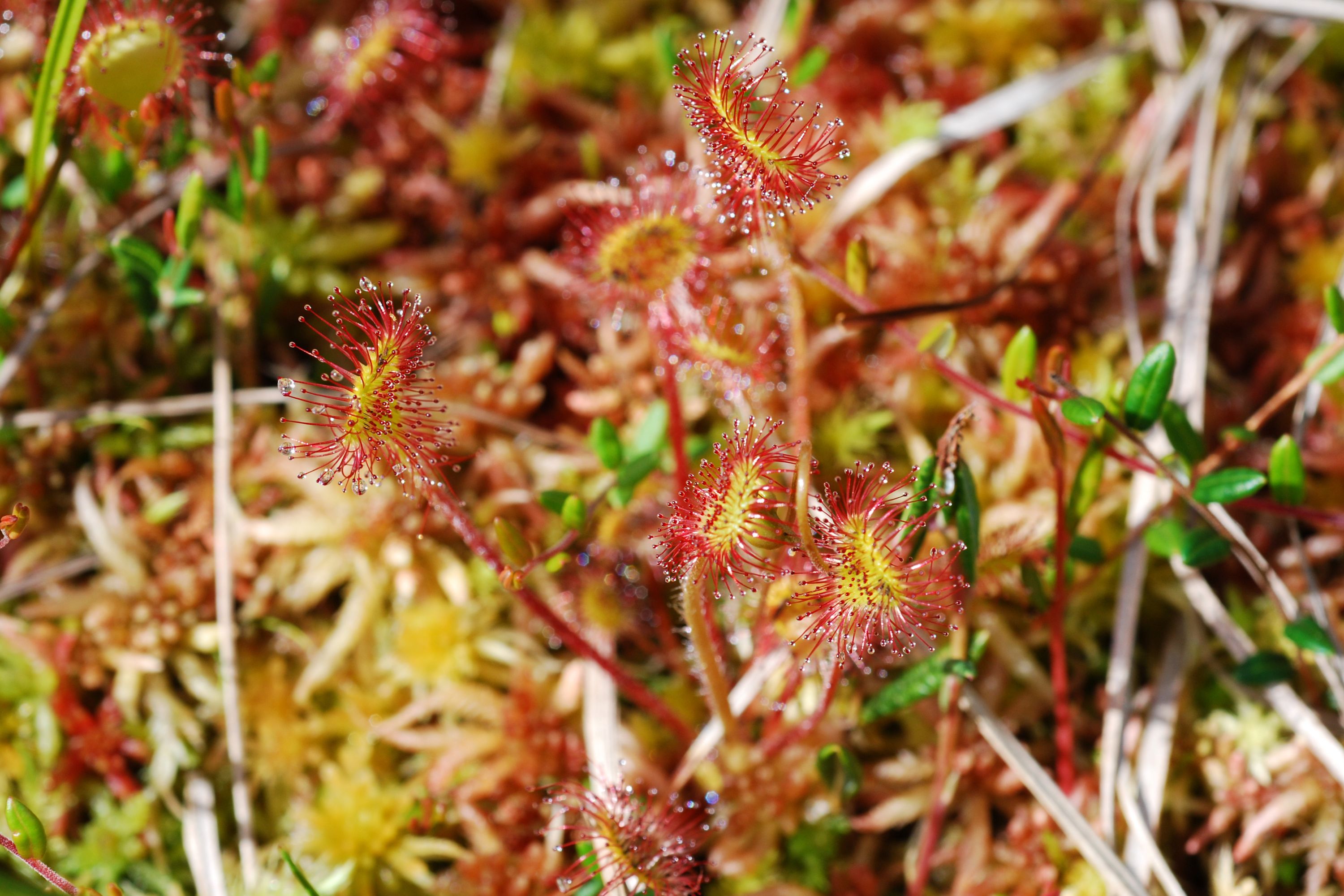Roundleaf sundew
(Drosera rotundifolia)

Description
Drosera rotundifolia, the round-leaved sundew or common sundew, is a carnivorous species of flowering plant that grows in bogs, marshes and fens. One of the most widespread sundew species, it has a circumboreal distribution, being found in all of northern Europe, much of Siberia, large parts of northern North America, Korea and Japan but is also found as far south as California, Mississippi and Alabama in the United States of America and in New Guinea. The leaves of the common sundew are arranged in a basal rosette. The narrow, hairy, 1.3-to-5.0-centimetre (0.51 to 1.97 in) long petioles support 4-to-10-millimetre (0.16 to 0.39 in) round laminae. The upper surface of the lamina is densely covered with red glandular hairs that secrete a sticky mucilage. A typical plant has a diameter of around 3 to 5 centimetres (1.2 to 2.0 in), with a 5-to-25-centimetre (2.0 to 9.8 in) tall inflorescence. The flowers grow on one side of a single slender, hairless stalk that emanates from the centre of the leaf rosette. White or pink in colour, the five-petalled flowers produce 1.0-to-1.5-millimetre (0.039 to 0.059 in), light brown, slender, tapered seeds. In the winter, D. rotundifolia produces a hibernaculum to survive the cold conditions. This consists of a bud of tightly curled leaves at ground level.
Taxonomic tree:







